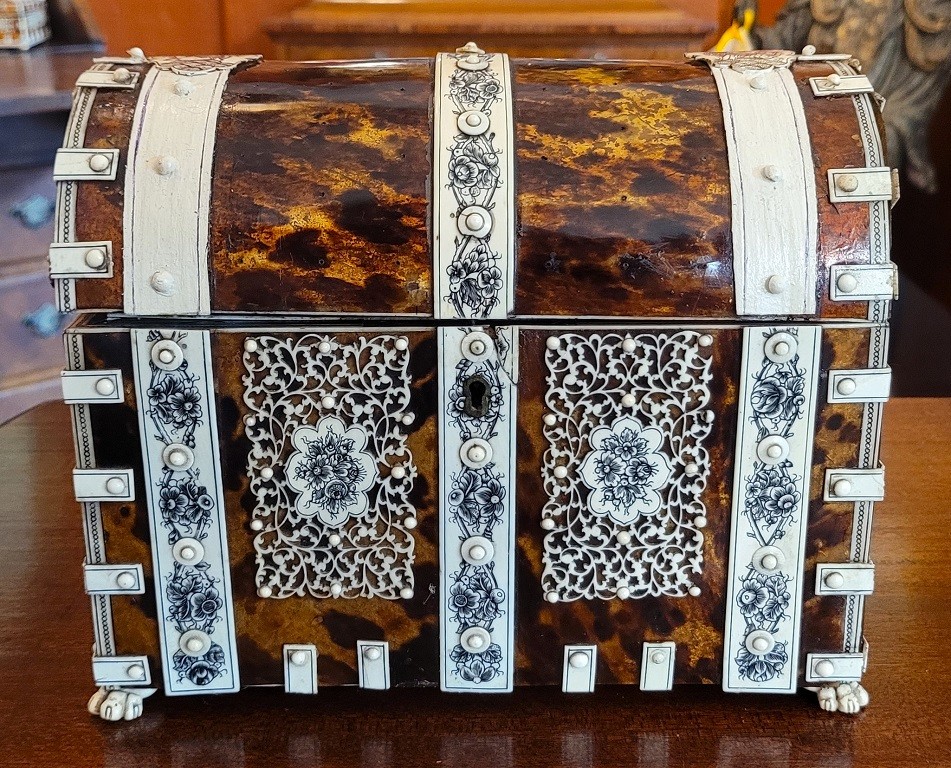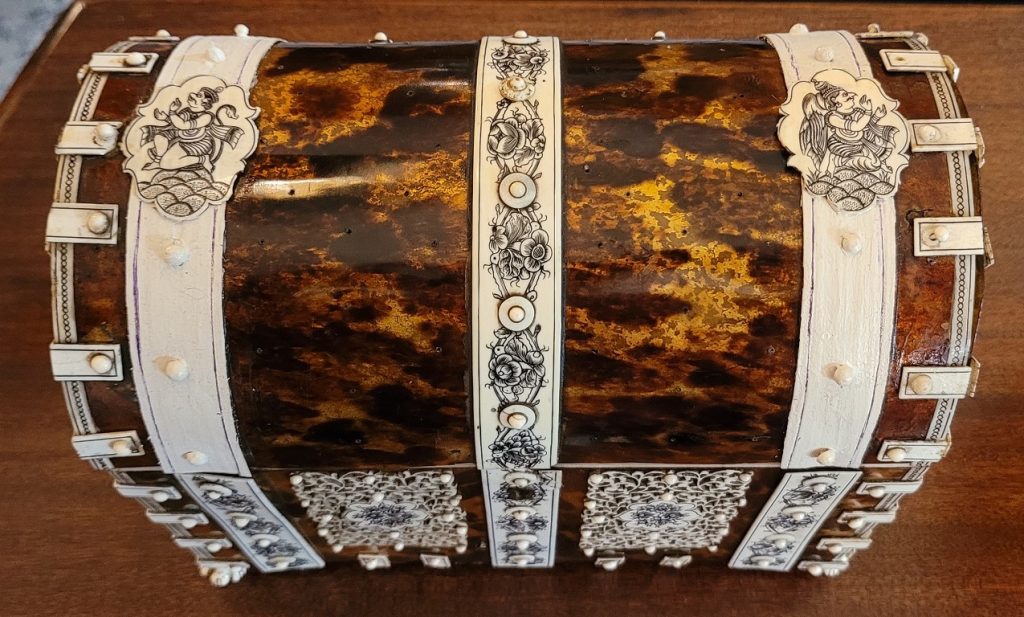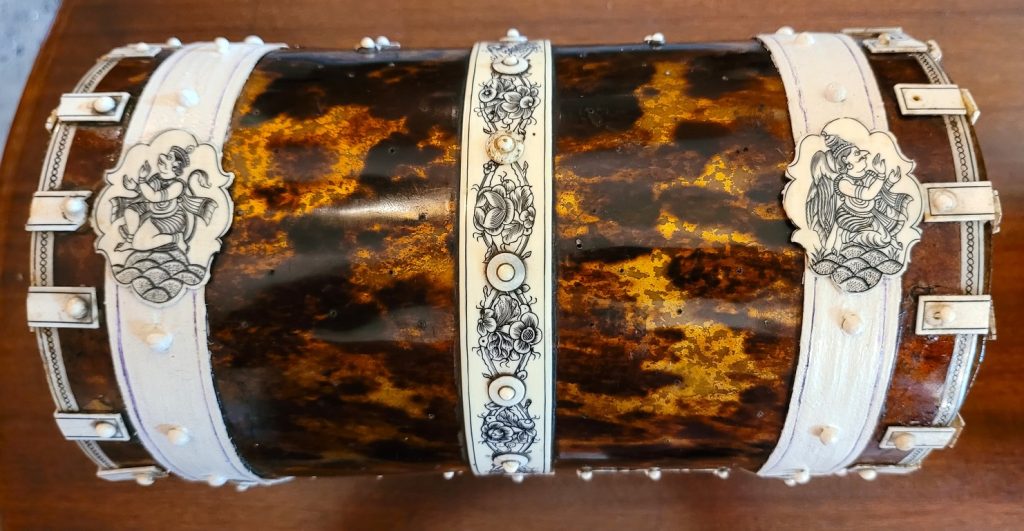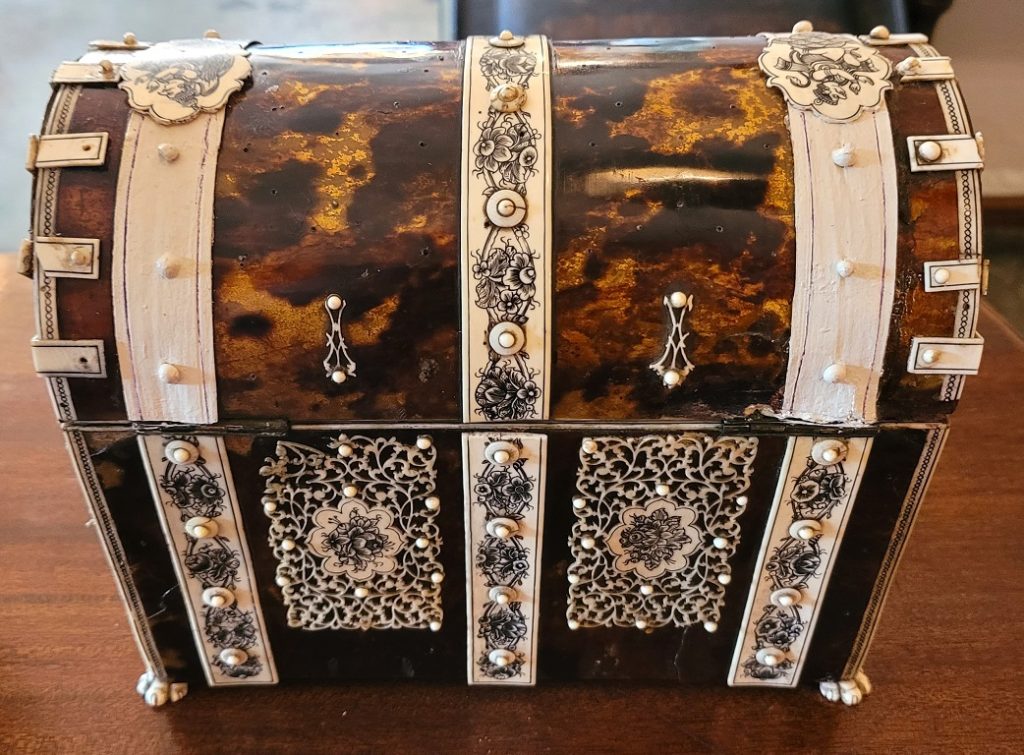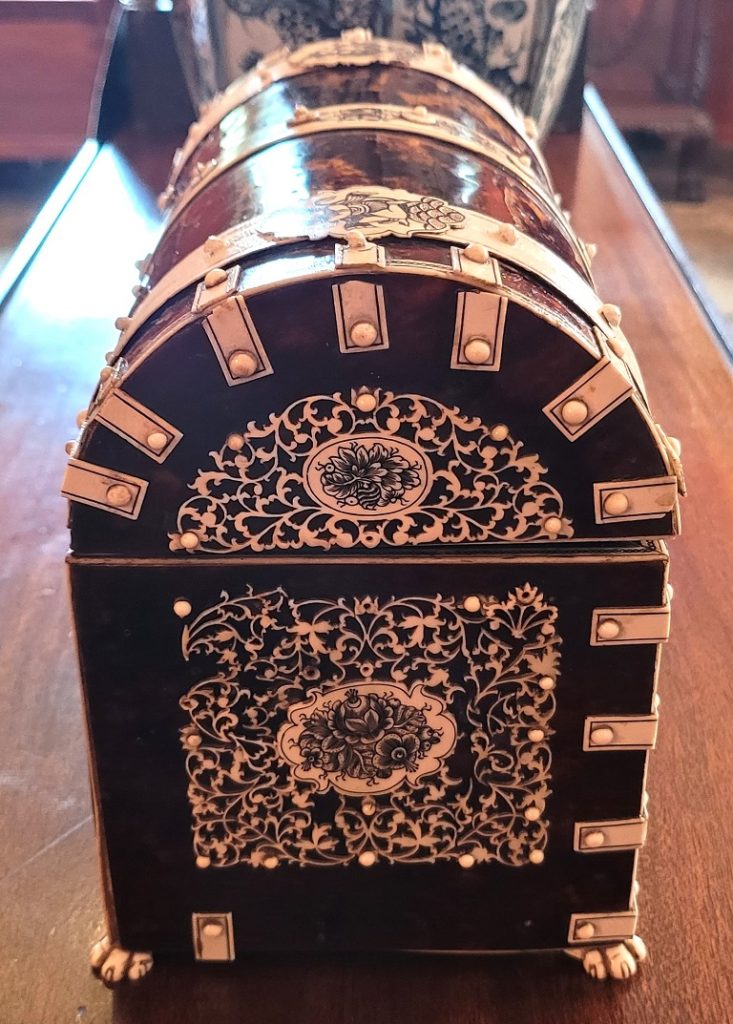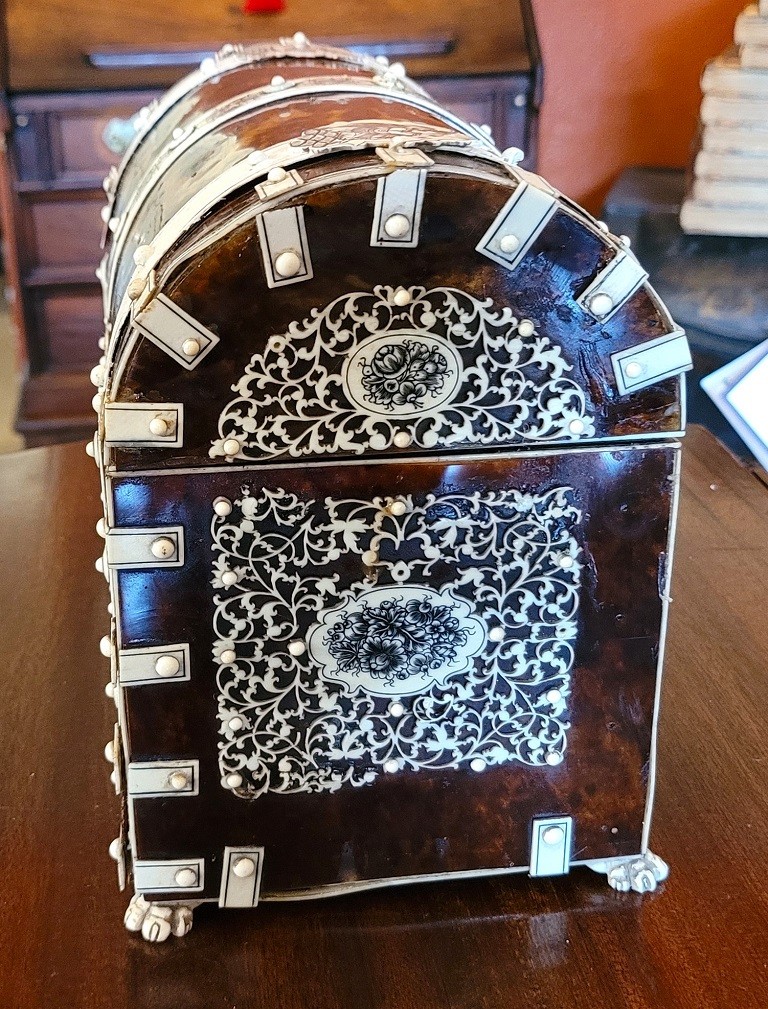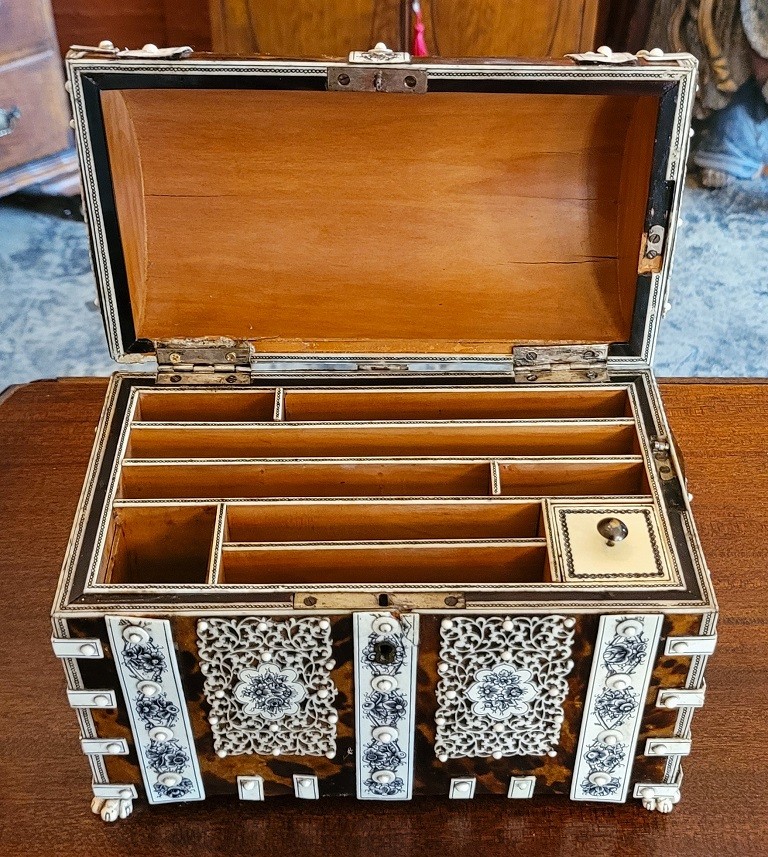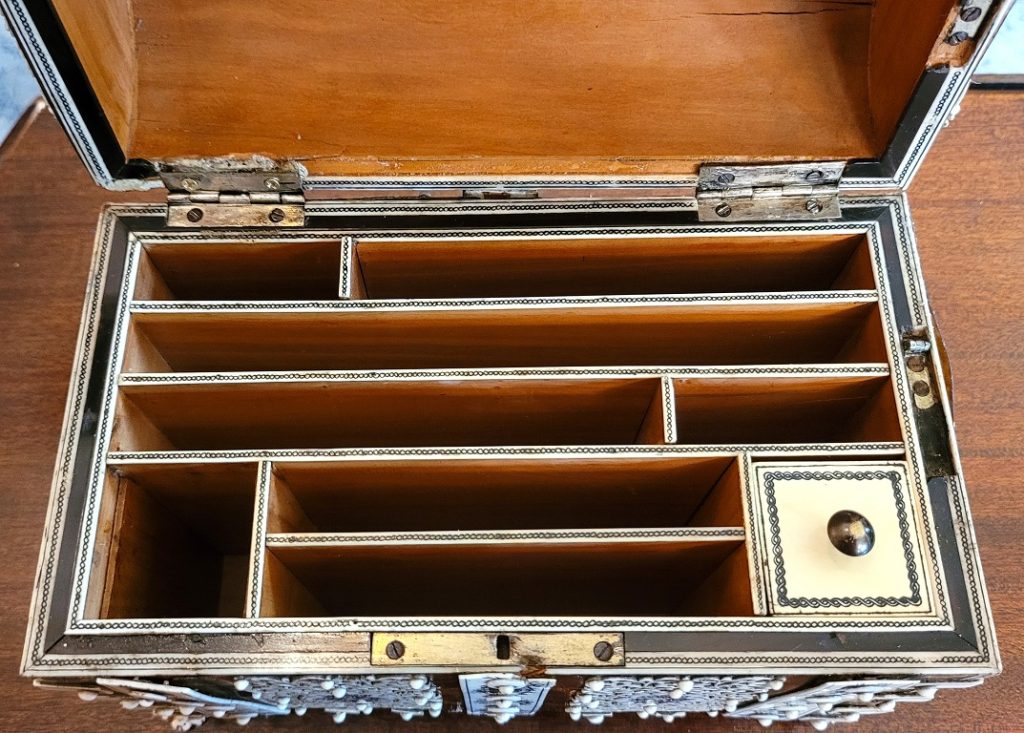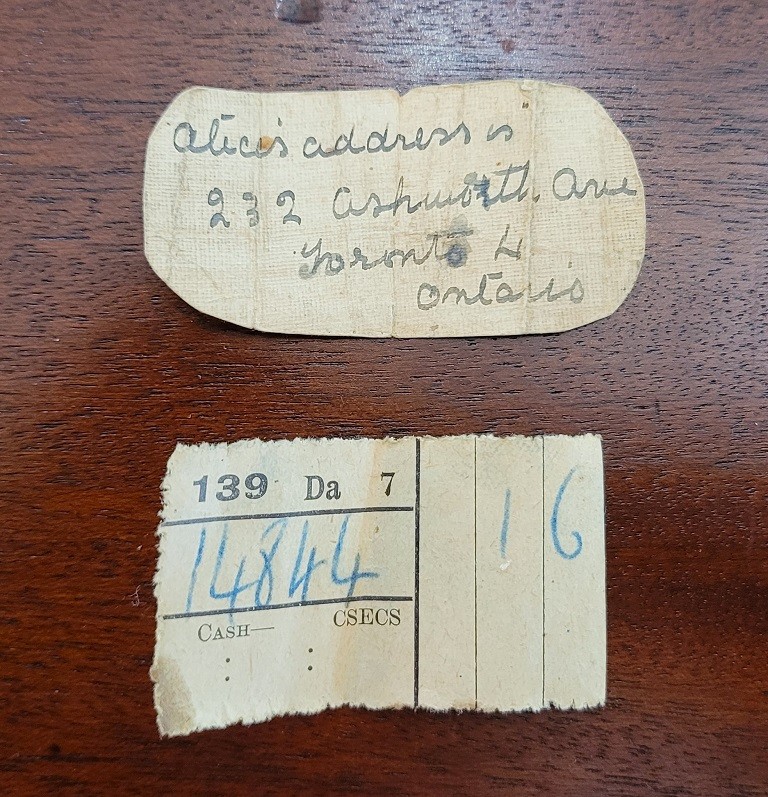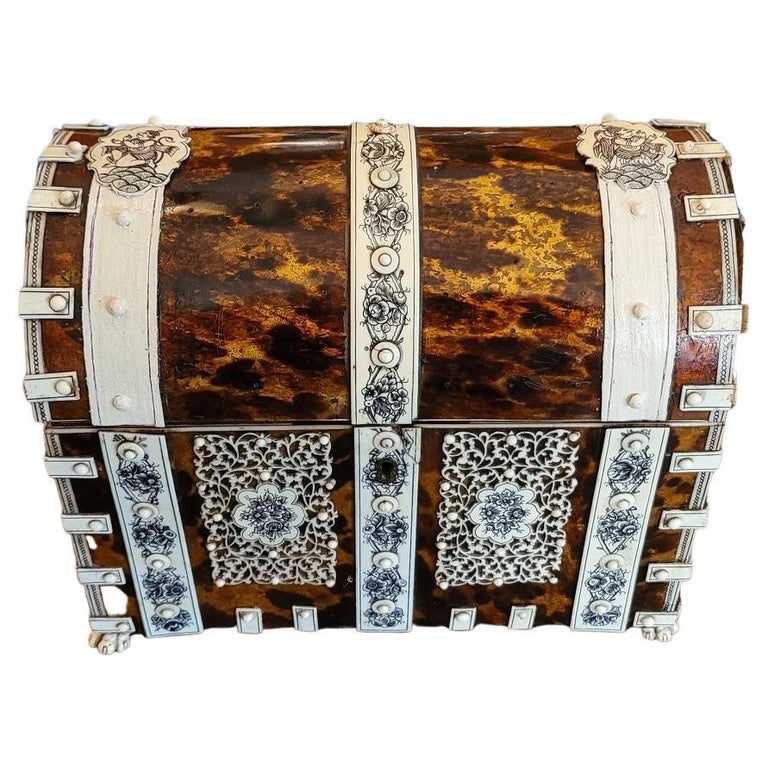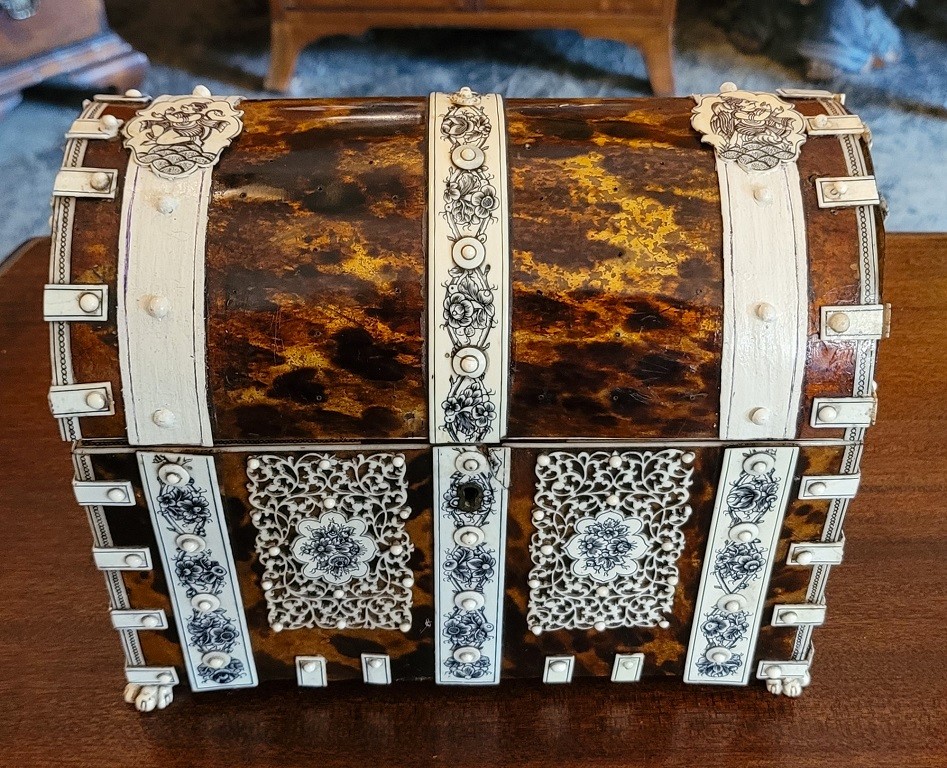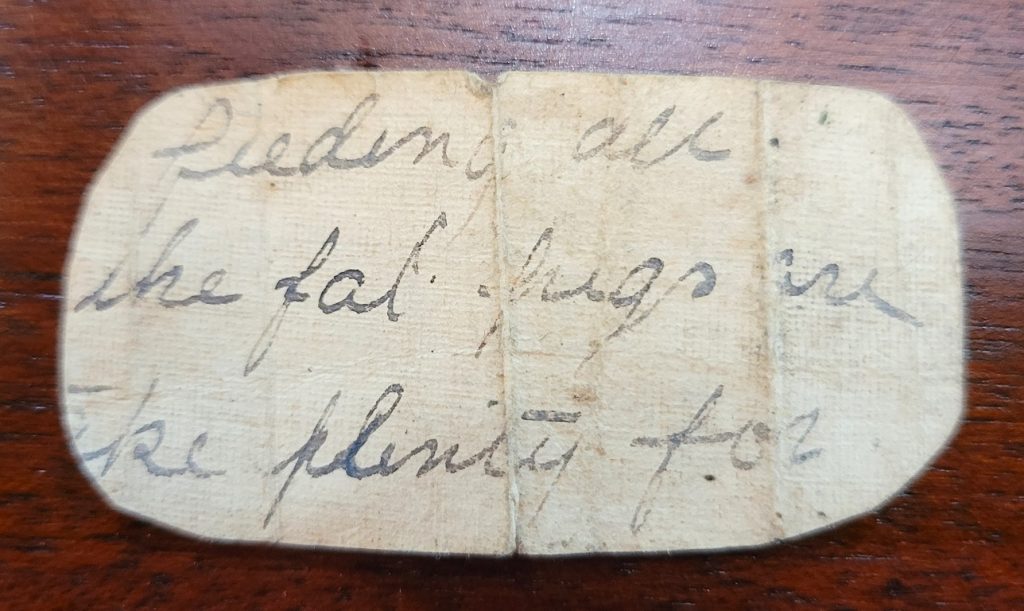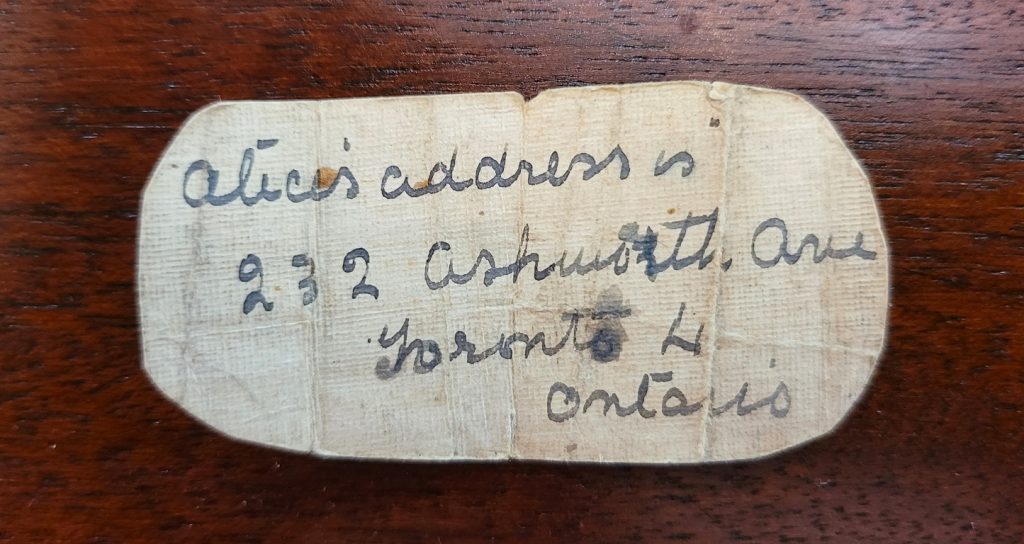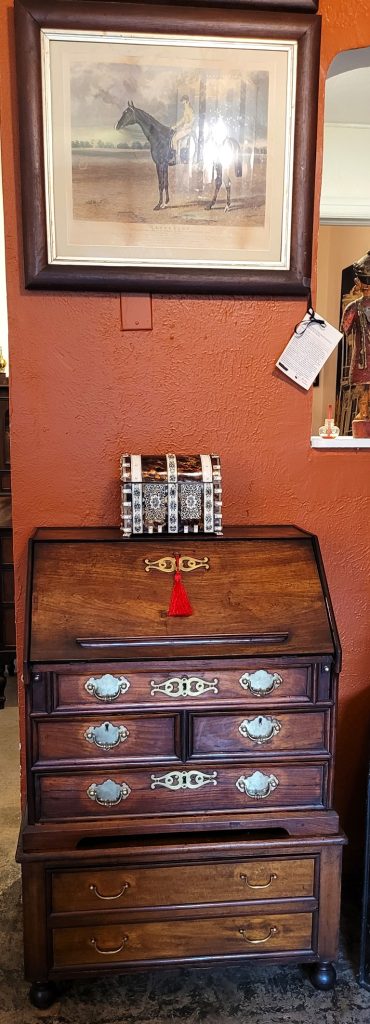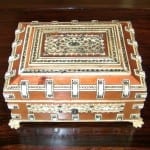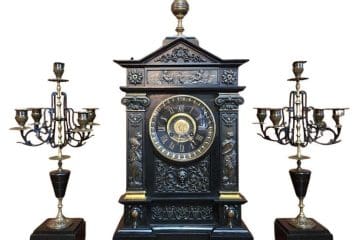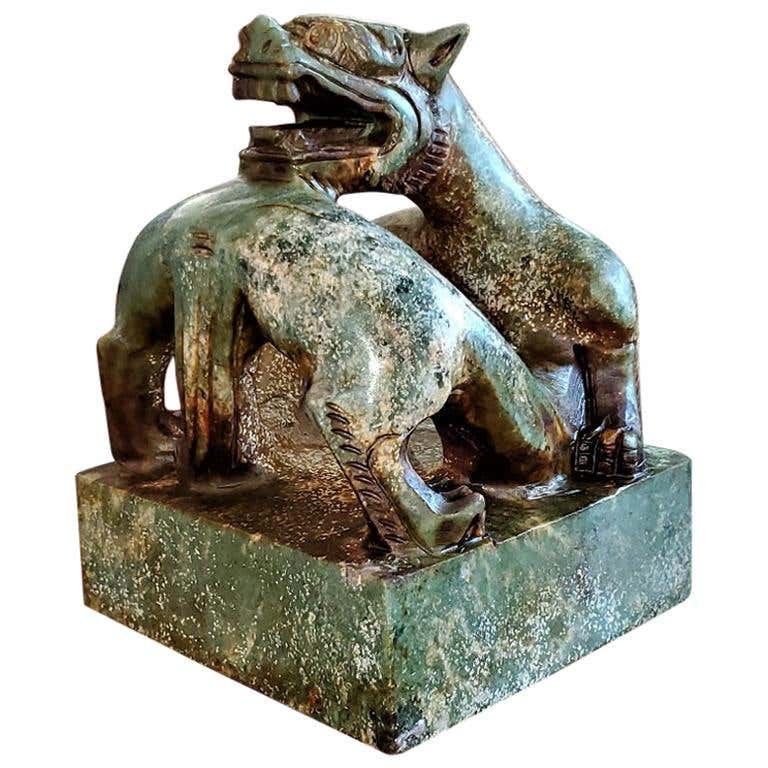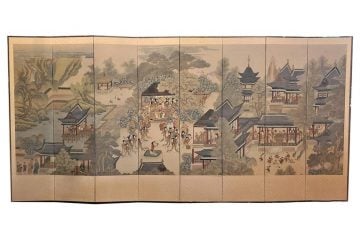19C Anglo Indian Vizagapatam Bone and Shell Domed Stationery Box
PRESENTING A LOVELY 19C Anglo Indian Vizagapatam Bone and Shell Domed Stationery Box – ‘Alice’s Box’.
Made in Vizagapatam, India, circa 1860-80.
We call this one: “Alice’s Box”! It has lived ‘a hard, well used and traveled life’, as is evident from the number of losses and repairs, as is obvious from the photos, especially to the faux ivory panels and bands to the top. The bonus to the loss of the frieze panels to the dome has a ‘bonus’, however, as their loss has revealed the most GORGEOUS faux blonde tortoiseshell underneath!
The box is dome/casket shaped.
The top has 3 bands, with the center one being the original. The 2 side bands are later ivorine.
The faux ivory and hand-painted medallions on the domed lid, have been saved and they depict Hindu Gods, Vishnu and Shiva.
The front and side panels are still in pretty good shape and are decorated with lac ink (indelible ink made from crushed beetles) depicting lovely floral designs.
The domed lid open to reveal a series of open compartments for envelopes, writing paper etc. and one lidded panel for stamps.
Inside the box are 2 paper labels: one probably being the original item ticket and the other with:
” Alice’s address is 272 Ashworth Ave, Toronto 4, Ontario”.
Probably, the original owner? Hence, we call it ‘Alice’s Box’.
What a journey/life this box has had!
Made in India, made its way to Canada, back to Ireland and then to Texas!
This is why, WE LOVE ANTIQUES!
It sits on 4 carved bone lions paw feet.
Despite its damage, it is still BEAUTIFUL!
ANGLO-INDIAN BOXES: Anglo Indian boxes were made in India for the English residents from the early part of the 18th century. They were brought back or sent back to England usually by the people who had commissioned them. From the beginning of the nineteenth century they were imported more commercially, although not in any significant numbers until the middle decades. They were very highly valued, especially the early ones, to the extent that the designs were copied on late 19th and early 20th century tins.
The early 19th century horn boxes were made in very robust architectural shapes. They often had stepped or canted lids of radiating reeded segments culminating in turned and fluted finials. They stood on turned feet, which showed up the form to full advantage. By the middle of the century shapes became simpler and smaller, sometimes domed, covered with flat horn veneer. They were decorated with fretted or incised ivory strips affixed with ivory pins.
Link: http://www.hygra.com/anglo.html#2
From the early 18th century Vizagapatam in India was a leading centre for wood and ivory work, where craftsmen produced fancy furniture and novelty wares specifically for western consumers.
19C Anglo Indian Vizagapatam Bone and Shell Domed Stationery Box.
Provenance: Part of our extensive Anglo-Indian Collection.
Dimensions: 7.25 inches tall, 8.5 inches Wide and 5.25 inches Deep
Condition: Has obvious condition issues. Lost fretwork, replacement banding. But the shell is still gorgeous. If it were not for the repairs, this box would be priced at multiples of the amount here.
SALE PRICE NOW: $1,300
